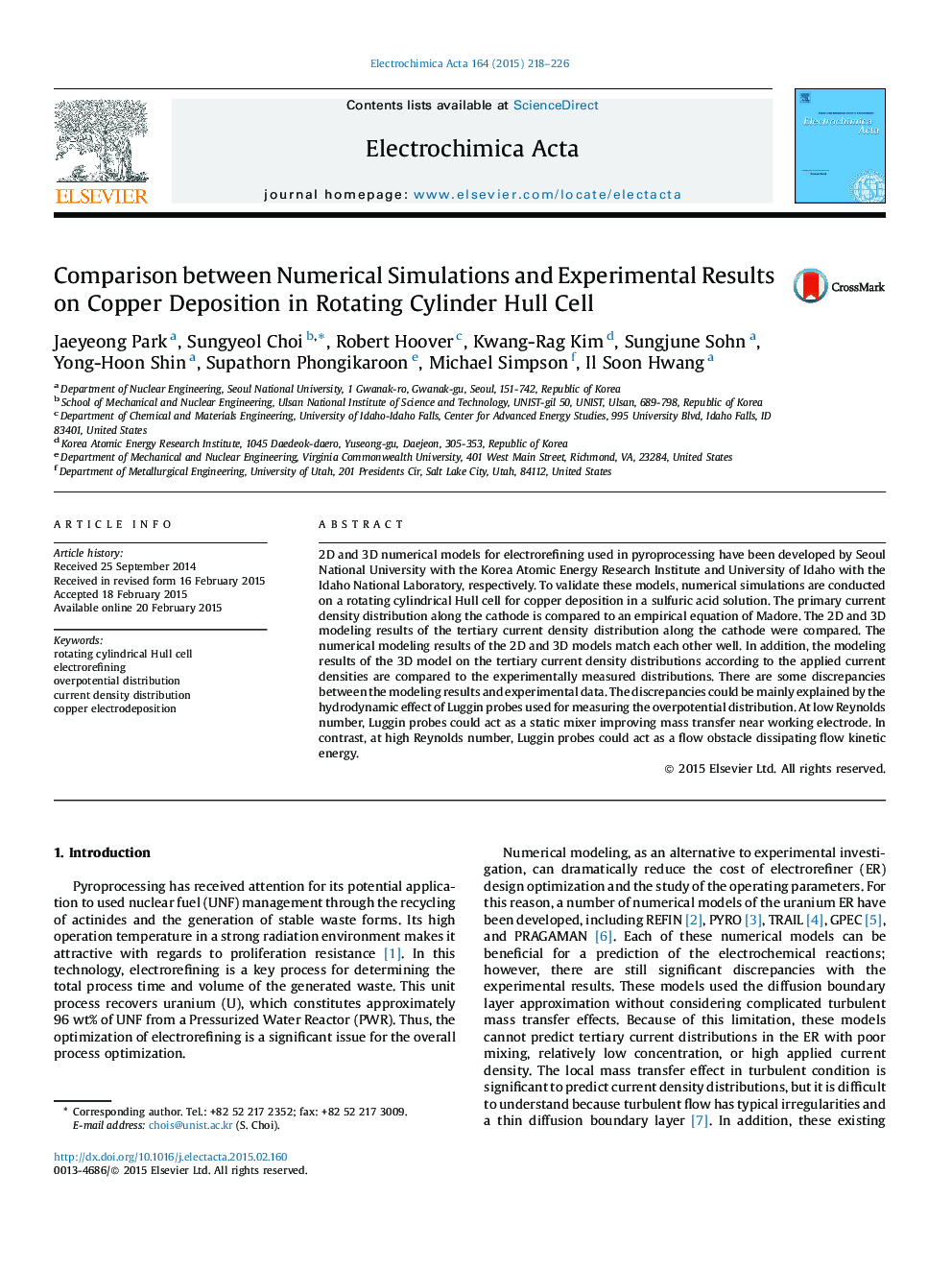| کد مقاله | کد نشریه | سال انتشار | مقاله انگلیسی | نسخه تمام متن |
|---|---|---|---|---|
| 184295 | 459572 | 2015 | 9 صفحه PDF | دانلود رایگان |
• 2D and 3D numerical models were developed for modeling metal electrodeposition.
• Experiments on Cu deposition were conducted in a rotating cylindrical Hull cell.
• Current and potential distributions were simulated along the cathode.
• Calculated potential distributions were validated with experimentally measured data.
• Current density distributions calculated by 2D and 3D models were compared.
2D and 3D numerical models for electrorefining used in pyroprocessing have been developed by Seoul National University with the Korea Atomic Energy Research Institute and University of Idaho with the Idaho National Laboratory, respectively. To validate these models, numerical simulations are conducted on a rotating cylindrical Hull cell for copper deposition in a sulfuric acid solution. The primary current density distribution along the cathode is compared to an empirical equation of Madore. The 2D and 3D modeling results of the tertiary current density distribution along the cathode were compared. The numerical modeling results of the 2D and 3D models match each other well. In addition, the modeling results of the 3D model on the tertiary current density distributions according to the applied current densities are compared to the experimentally measured distributions. There are some discrepancies between the modeling results and experimental data. The discrepancies could be mainly explained by the hydrodynamic effect of Luggin probes used for measuring the overpotential distribution. At low Reynolds number, Luggin probes could act as a static mixer improving mass transfer near working electrode. In contrast, at high Reynolds number, Luggin probes could act as a flow obstacle dissipating flow kinetic energy.
Journal: Electrochimica Acta - Volume 164, 10 May 2015, Pages 218–226
